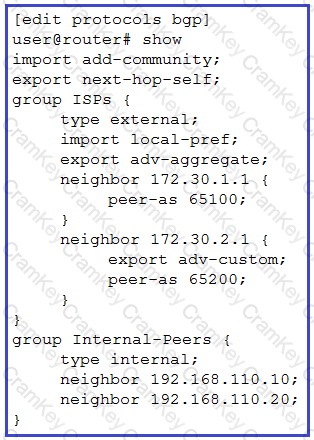Enterprise Routing and Switching - Specialist (JNCIS-ENT)
Last Update Apr 26, 2025
Total Questions : 110
To help you prepare for the JN0-349 Juniper exam, we are offering free JN0-349 Juniper exam questions. All you need to do is sign up, provide your details, and prepare with the free JN0-349 practice questions. Once you have done that, you will have access to the entire pool of Enterprise Routing and Switching - Specialist (JNCIS-ENT) JN0-349 test questions which will help you better prepare for the exam. Additionally, you can also find a range of Enterprise Routing and Switching - Specialist (JNCIS-ENT) resources online to help you better understand the topics covered on the exam, such as Enterprise Routing and Switching - Specialist (JNCIS-ENT) JN0-349 video tutorials, blogs, study guides, and more. Additionally, you can also practice with realistic Juniper JN0-349 exam simulations and get feedback on your progress. Finally, you can also share your progress with friends and family and get encouragement and support from them.
Click the Exhibit button.

Which statement is true about the configuration shown in the exhibit?
Which two statements about the default load-balancing behavior for the Junos OS are correct? (Choose two.)
You are configuring IBGP and you must ensure that reachability is maintained between participating routers, even if the physical topology changes.
Which two actions should you perform in this scenario? (Choose two.)
Click the Exhibit button.

You are attempting to set up IS-IS on a device that has two interfaces (ge-0/0/1.0 and ge-0/0/2.0) in Level 1 and one interface (ge-0/0/0.0) in Level 2; however, it does not participate in either level.
Referring to the exhibit, what is the problem?